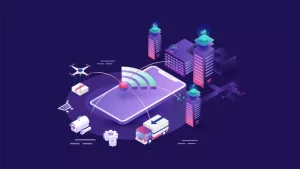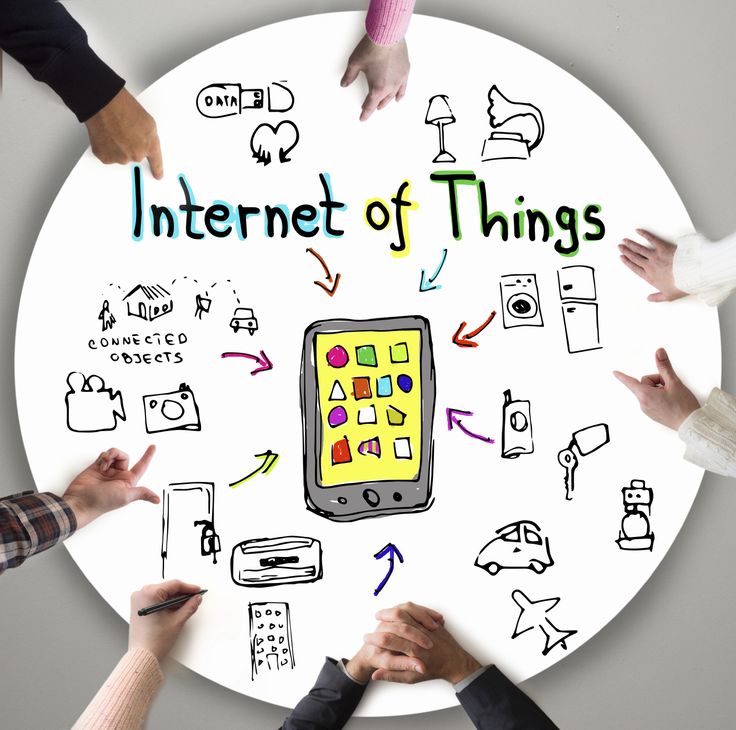Introduction
In the contemporary digital environment, the Internet of Things (IoT) has arisen as a transformative notion, radically changing our interaction with technology. The Internet of Things (IoT) facilitates seamless communication and data sharing by linking diverse objects to the internet, resulting in increased efficiency, enhanced decision-making, and new solutions across numerous sectors. This essay explores the fundamental nature of IoT, the enabling technologies, the associated security problems, and its transformational effects on daily life and commerce.
Comprehending the Internet of Things

The Internet of Things denotes the interconnected network of physical devices linked to the internet, facilitating data collection and exchange. This networked ecosystem includes household appliances and industrial machinery, all engineered to function cohesively to deliver real-time information and insights.
The phrase “Internet of Things” was introduced by Kevin Ashton, co-founder of MIT’s Auto-ID Center, during a 1999 presentation to Procter & Gamble. His objective was to emphasize the capabilities of radio-frequency identification (RFID) technology. The concept originated in the 1970s with terminology such as “embedded internet” and “pervasive computing,” but it acquired substantial momentum in the early 2000s due to the proliferation of wireless technologies and increased internet connectivity.
Fundamental Technologies Facilitating IoT
A multitude of significant technological innovations has propelled the expansion of IoT.
Sensors are essential for detecting environmental variations, including temperature, humidity, light, motion, and pressure. Actuators facilitate physical reactions to data inputs, such as opening a valve or initiating a motor. Collectively, they constitute the foundation of IoT devices, enabling interaction with their environment.
The diverse connectivity choices, including as WiFi, Bluetooth, Zigbee, and cellular networks, have facilitated the interconnection of IoT devices with the internet and among themselves. This enables effective data transmission and interaction among devices.
Cost-Effective and Energy-Efficient Sensor Technology: Progress in sensor technology has enabled manufacturers to include IoT functionalities into their products at a reduced cost. These energy-efficient sensors provide ongoing data acquisition and transmission with minimal energy expenditure.
Advancements in Artificial Intelligence and Natural Language Processing improve IoT devices by allowing them to learn from data and respond to user requests in natural language. This enhances the intuitiveness and user-friendliness of devices.
The integration of wireless technologies, microelectromechanical systems, and microservices has facilitated uninterrupted connectivity and data exchange between devices and the cloud, fostering the development of advanced IoT applications.
Security and Privacy Issues
Although IoT has substantial advantages, it concurrently presents considerable security and privacy issues. The growing prevalence of interconnected devices broadens the attack surface, providing additional opportunity for hackers to exploit weaknesses. The notorious Mirai botnet assault in 2016 illustrated the vulnerability of unprotected IoT devices, which were exploited to execute extensive distributed denial-of-service operations, resulting in significant disruptions.
Furthermore, the interdependent structure of IoT indicates that a solitary vulnerability can compromise the entire system. If hackers infiltrate a single device, they may be able to modify data throughout the network, rendering it inoperative. Frequent updates and patches are crucial for manufacturers to safeguard devices from attackers.
Privacy considerations are critical, as IoT devices frequently gather sensitive personal data. Companies may utilize this data for marketing objectives or sell it to third parties without users’ approval. To alleviate these dangers, it is imperative for manufacturers to establish stringent security protocols and inform users about safe practices for utilizing IoT devices.
Obstacles to IoT Implementation

The extensive implementation of IoT presents several challenges:
Complex Management: The proliferation of IoT gadgets renders their management progressively intricate. Organizations may encounter difficulties in collecting, analyzing, and managing data from multiple devices, resulting in inefficiencies and data saturation.
Compatibility Challenges: The absence of global standards for IoT compatibility results in platform fragmentation. Numerous IoT suppliers create proprietary platforms and protocols tailored to their goods, leading to incompatibility across devices from various manufacturers. This fragmentation obstructs interoperability and hampers the seamless integration of IoT technologies.
The proliferation of IoT may lead to job displacement for low-skilled workers, since automation diminishes the necessity for human involvement in several jobs. For example, computerized inventory management and automated teller machines (ATMs) have reduced the need for manual labor in these sectors, resulting in job losses and instability.
Regulatory and Legal Challenges: The rise of IoT devices presents businesses with numerous legal issues around data protection, privacy, and cybersecurity. Adherence to country-specific rules increases the complexity of IoT implementation.
Standards and Frameworks for IoT
Various groups are currently developing IoT standards and frameworks to tackle the difficulties of interoperability and security.
Prominent Organizations: The International Electrotechnical Commission (IEC), the Institute of Electrical and Electronics Engineers (IEEE), and the Industrial Internet Consortium are significant contributors to the advancement of IoT standards.
Examples of IoT standards include IPv6 over Low-Power Wireless Personal Area Networks (6LoWPAN), Zigbee, and Data Distribution Service (DDS), which enable device connection. These standards guarantee seamless interaction among devices, irrespective of their manufacturer.
IoT Frameworks: Prominent cloud platforms such as Amazon Web Services (AWS) IoT and Microsoft Azure IoT offer extensive frameworks for the development and management of IoT applications. These platforms include instruments for data analytics, device management, and integration, allowing enterprises to fully leverage the capabilities of IoT.
Prospective Developments in IoT

The future of IoT is positive, with forecasts suggesting substantial expansion across multiple sectors:
The IoT healthcare industry is projected to attain $150 billion in 2024 and $289 billion by 2028, propelled by the rising adoption of wearables and in-home sensors for remote health monitoring.
Projections for the Self-Driving Vehicle Market: By 2035, the market for autonomous vehicles is anticipated to yield between $300 billion and $400 billion. The Internet of Things (IoT) technology will be important in the advancement of autonomous vehicles, facilitating real-time data transmission and enhanced safety.
Transition to a Modular, Microservices Framework: As IoT advances, it will develop from a singular device paradigm to a more modular, microservices-oriented structure. This transition will improve adaptability, enabling enterprises to implement and expand IoT solutions with more ease.
The advent of 5G, Wi-Fi 6, and Low Power Wide Area Network (LPWAN) technologies will enhance IoT integration by facilitating swifter and more dependable inter-device connectivity.
Conclusion
The Internet of Things is revolutionizing the digital environment by linking devices and facilitating real-time data transmission. Although technology offers substantial prospects for efficiency and creativity, it concurrently brings considerable security and privacy problems that require resolution. The ongoing advancement of IoT will be essential in determining our future, from improving daily life to transforming business practices. By emphasizing security, interoperability, and consumer awareness, we can fully leverage the potential of IoT and facilitate the development of a more intelligent, interconnected world.




